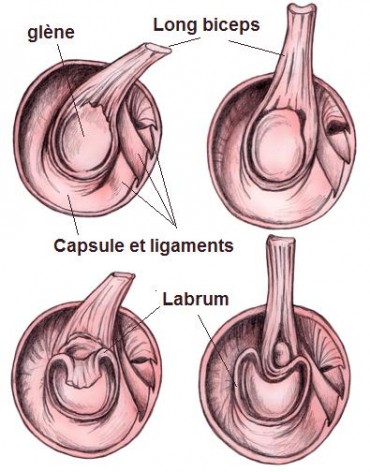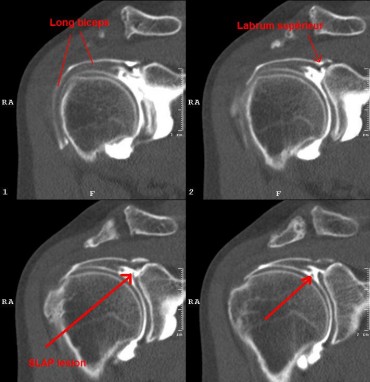They are found in certain shoulders with recurrent dislocations associated with more severe lesions (Bankart lesion); or in unstable painful shoulders likely to be involved in the micro-instability of the shoulder, especially when the long biceps is snatched.


Diagnosis on clinical examination is often difficult.
we can find a long biceps suffering but most often it is qualified as internal inconvenience of the shoulder function.
These lesions often following traumatism during a fall with forced movement of the shoulder in an attempt reception on the ground.
The diagnosis on imaging is also difficult but sometimes very specific (tearing up to the upper labrum bone, biceps fissure …).
But, like most micro-instabilities, the interrogation of the patient is very evocative.
Despite ‘normal’ examinations, arthroscopic exploration of the shoulder is sometimes proposed to test the insertion of the labrum and biceps.
The treatment is surgical only in case of gene or pain and if we consider that it explains the symptoms.
an arthroscopic repair of the anchor bead has been proposed in particular if the biceps is low inflammatory. In the event of a crack, a resection is then performed. Tenotomy and / or arthroscopic tenodesis of the long biceps (fixation lower on the bicipital groove) is now practiced to regulate the instability of the biceps at the same time as its inflammation.
Arthroscanner view of a SLAP lesion (tearing up to the bones of the upper bead and the long biceps).
